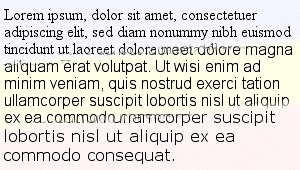Fabian Valkenburg sent in e-mail letting me know that my comments on Opera 7’s CSS support got used in the talkback to an evolt.org article, and that I’m wrong about Opera 7’s display of the dates on this page being a bug. As it turns out, the answer to that is “maybe.”
First, a word on how I set up the title and date styling in the basic site theme. Both are contained in successive h5 elements, each with an appropriate class value (title and date, in fact). I make the title inline so I can wrap a border around it that “shrink-wraps” the text. Then, since I want to move it upward, I relatively position it upward two-third of an em. Since it has been relatively positioned, for the purposes of laying out other elements, browsers should act as though the element wasn’t positioned at all. (See CSS2:9.4.3 for details.) So, in that sense, the relative positioning should have no impact on how the date is laid out, and in fact it doesn’t in the browsers I tested; I only brought it up to show that the title wasn’t floated. On the other hand, I float the date to the right and right-align its text. Since I’m floating the date to the right from below the place where the date’s h5 would have been (because the date comes after the title), I give it a negative top margin to pull it upward, so that it sits just below the top border on the entry.
Now here’s where things get fuzzy. According to CSS2:9.5.1, the outer top edge of a float may not be any higher than the top of preceding float or block boxes. It doesn’t say anything about inline boxes. Remember that with CSS, it’s possible to have inline and block boxes for sibling elements. So the effect of that portion of CSS2 is to allow floats to ignore preceding inline boxes when they float. Or not ignore them, as the case may be.
Let me frame it another way: here’s a testcase that shows h3 and h4 elements in the normal flow, and then with the h4 elements floated. To my way of thinking, both floats should sit below the h3 elements that precede them, regardless of the type of box those h3 elements generate. This is because my conception of floats is that they start from their place in the normal flow, and then move to the right (or left). From there, they move downward if they must, but not up. Unless I give them a negative top margin to move them up, of course.
The behavior I just described is what IE5.5/Win and Gecko-based browsers do, to pick two examples. But what Opera 7 (and, in many cases, IE5/Mac) does is not a bug, because it doesn’t violate the CSS specification, so I retract my earlier statement. I believe that what it does is not what site authors would want, but it isn’t wrong. Thanks to the wording in CSS2:9.5.1, neither are the browsers that don’t agree with Opera 7 wrong, although I would accept that they’re further away from the letter of the specification. Whether or not they violate its spirit isn’t clear, and it’s in cases like this that browsers tend to do whatever their programmers thought best.
So what we have here is a gray area in which I believe the letter and spirit of CSS are pulling in different directions, and browsers are splitting over which path they choose. Hopefully CSS2.1 will be clarified to address what should happen, and we won’t have to bother arguing about who’s doing what better in which way for whom.
As for css/edge, yes, I hear you. Opera 7 gets most or all of the demos correct, and may in fact reveal some erroneous assumptions on my part in the pure CSS menus demo (or maybe not; I don’t know yet). When I get time to actually run Opera 7 through all the demos and evaluate its behavior, I’ll see if I can get the support information updated. Unless of course I finally decide that the support information is becoming too much trouble to have around, in which case I’ll update it into oblivion. It never really helped prevent people from misrepresenting what the demos were supposed to do anyway.
Personally, I like Opera 7 (or did once I switched its skin to the classic look), and my comments weren’t meant to cast it into the junkbin of bad browsers. If I were a Windows user, I’d probably use it a lot more than I do. There are rough edges, as with any browser, but overall it’s quite good—I think I said that already, but some people don’t seem to have heard that part. Opera 7 handles a site redesign project I’m working on a lot better than Opera 6 does, I’ll say that much.

